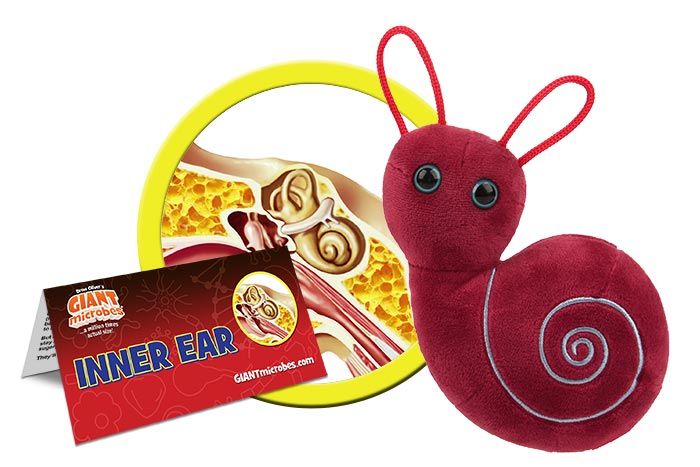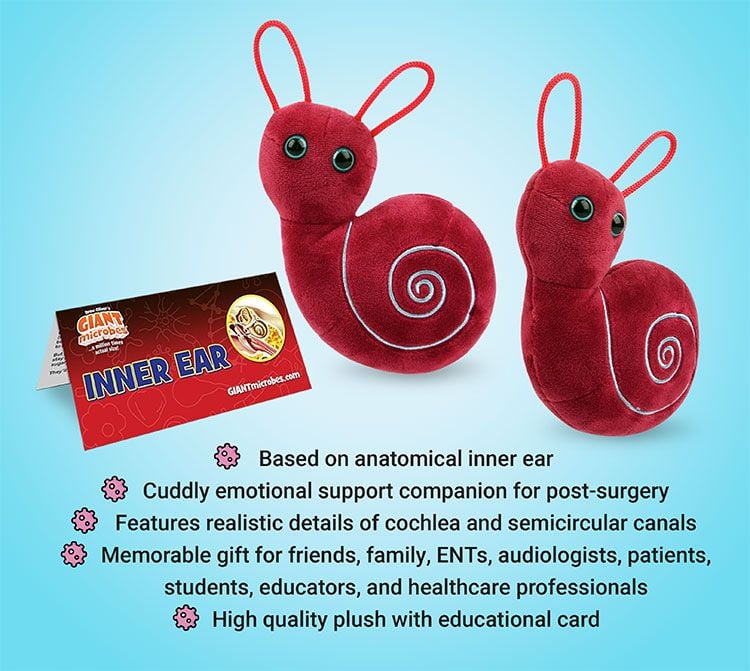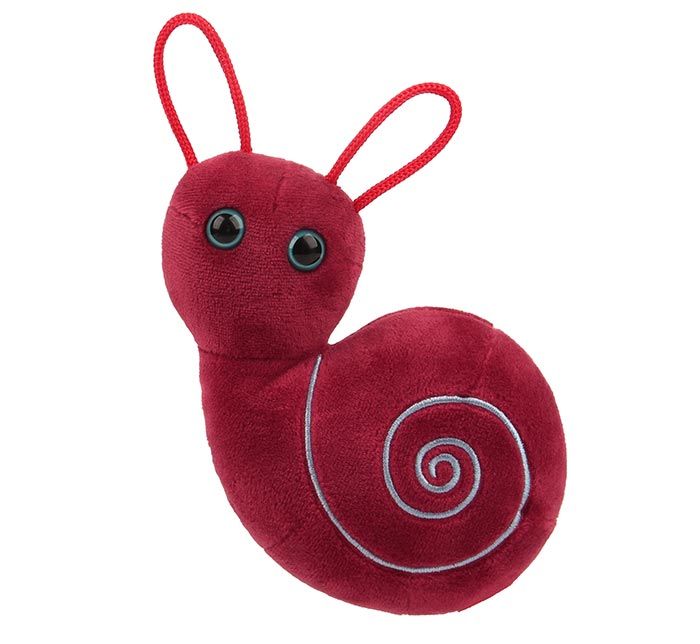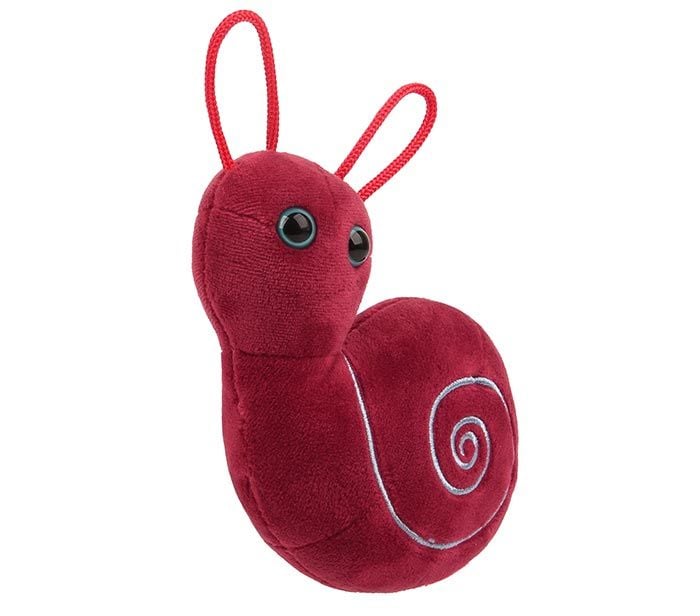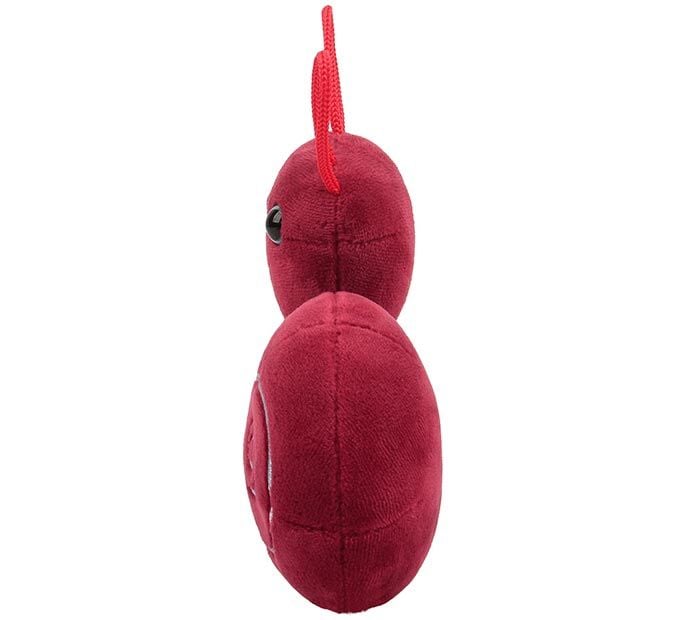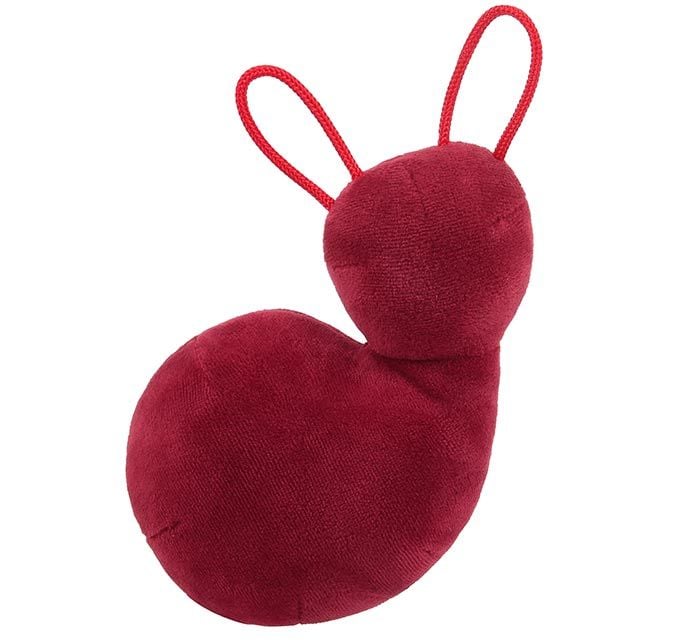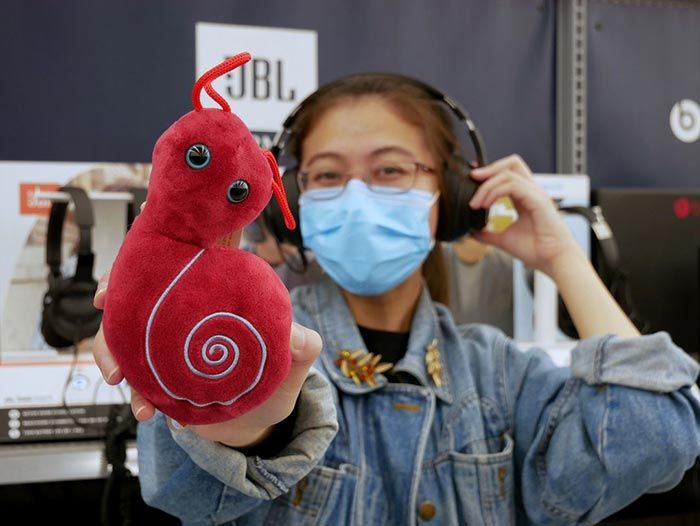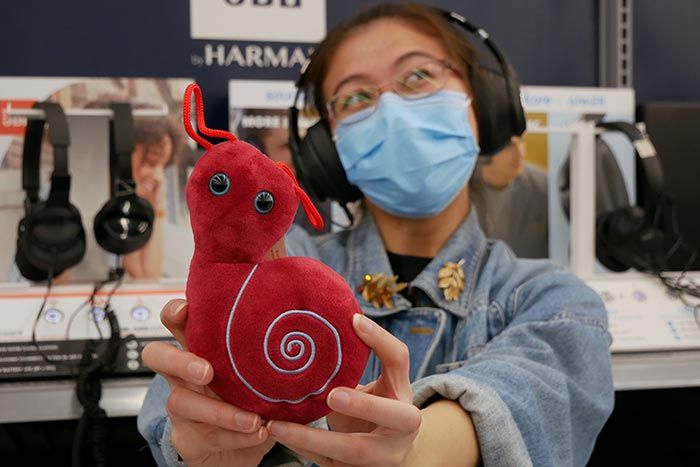Inner Ear
Out of Stock
Product Details
Additional Information
| Sizes | Giantmicrobes are based on actual microbes, cells, organisms and other critters, only 1,000,000 times actual size! Gigantic (GG) 40-60cm XL (XL) 25-38cm Original (PD) 12-20cm Keychain (KC) 5-10cm with clip |
|---|---|
| Materials | Plush from all new materials. Stuffed with polyester fiber fill. Surface washable: sponge with water & soap, air dry. |
| Packaging | Each plush microbe includes a printed card with fun, educational and fascinating facts about the actual microbe or cell. |
| Safety | Every product meets or exceeds U.S. and European standards for safety. For ages 3 and up. |
All about Inner Ear
FACTS: Turn down that music and listen up! Your ear is a remarkable sensory organ with three parts: the outer ear, the middle ear with the eardrum, and the inner ear. The inner ear is a bony labyrinth that creates our sense of balance and hearing. Balance is controlled by three semicircular canals containing fluid and tiny hairs. When you tilt your head, the fluid adjusts and pushes the hairs, sending nerve signals to your brain so you can make balance corrections.
The cochlea is the main organ of hearing. This snail-shaped bony casing converts mechanical sound vibrations into electronic nerve signals. It contains the basilar membrane and an intricate collection of hair-like nerve filaments, called hair cells. The membrane vibrates in response to sound. Thousands of these hair cells respond to different sound pitches based on their location on the membrane. High pitched sounds impact the base of the cochlea where the membrane is more narrow and thick. Low pitched sounds stimulate the inner tip where the membrane is wider and flexible. Thus, sound vibrations become electronic signals that travel from your auditory nerve to your brain which processes and interprets the sound.
Hearing loss and deafness are due to disruptions in the auditory system. There are three main types. Conduction deafness occurs when sound waves are obstructed from reaching the hair cells. Sensorineural hearing loss is caused from damage to the cochlea or auditory nerve. Central deafness is caused by defects in the auditory pathways of the brain. Since the 1980s, cochlear implants have been used to treat sensorineural hearing loss. This amazing neuroprosthetic device takes on the role of the hair cells within the cochlea. Lend an ear and take good care of your amazing ears!


